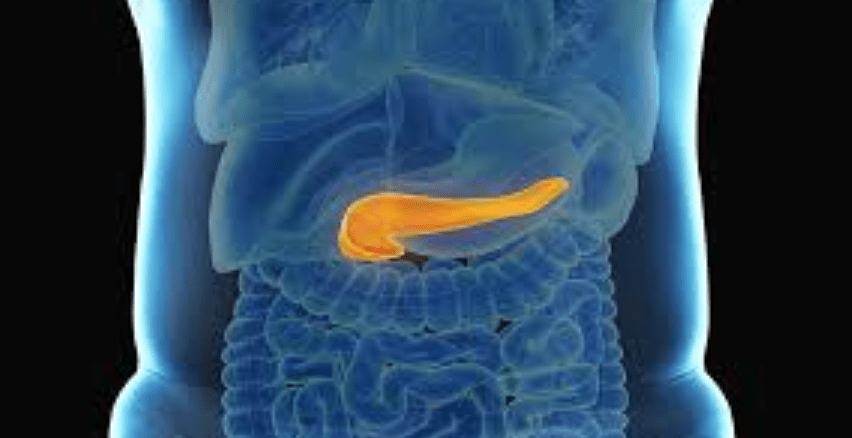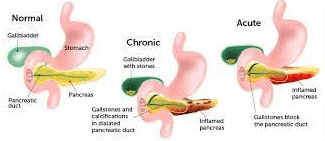Pancreatitis in Children
Understanding Pancreatitis in Children: A Complete Guide for Parents –
Pancreatitis is a condition in which the pancreas, a gland located in the abdomen, becomes inflamed. While pancreatitis is commonly associated with adults, it is essential to note that it can also affect children. As a parent, it is crucial to be aware of the signs, symptoms, risk factors, and treatment options for pancreatitis in children. By thoroughly understanding this condition, parents can actively engage in their child’s healthcare and play a vital role in preventing serious complications. This post will explore the various types, causes, and symptoms of pancreatitis in children. Additionally, we will discuss the available diagnosis methods, treatment options, coping strategies, and prevention tips that parents can consider.

Types and Causes of Pancreatitis in Children:
There are two types of pancreatitis in children: acute and chronic.
- Acute pancreatitis
With proper treatment, a sudden inflammation of the pancreas usually resolves within a few days. The most common causes of acute pancreatitis in children are gallstones and abdominal trauma. Moreover, certain medications, infections, and genetic factors can sometimes contribute to the development of acute pancreatitis.
- Chronic pancreatitis
On the other hand, chronic pancreatitis is a long-term inflammation of the pancreas that can result in permanent organ damage. Additionally, it can be caused by several factors. These factors include genetic conditions such as cystic fibrosis, abnormal pancreas development, and alcohol abuse. Furthermore, chronic pancreatitis can sometimes develop due to repeated episodes of acute pancreatitis.
It’s important to note that pancreatitis in children is relatively rare. However, certain risk factors can increase the likelihood of its occurrence. These risk factors encompass a family history of pancreatitis, cystic fibrosis, high levels of triglycerides or calcium in the blood, and specific medications.

Signs and Symptoms of Pancreatitis in Children –
Pancreatitis can be a severe and painful condition, and parents need to be aware of the signs and symptoms in their children.
The symptoms of pancreatitis in children can vary depending on the type and severity of the condition, but some common signs to look out for include:
- Abdominal pain
This is the most common symptom of pancreatitis in children. The pain may be severe and located in the abdomen’s upper left or upper middle. It may also be felt in the back or between the shoulder blades.
- Nausea and vomiting
Children with pancreatitis may experience persistent nausea and vomiting, which can lead to dehydration if left untreated.
- Fever
A fever may be present if an infection causes pancreatitis.
- Jaundice
This is a yellowing of the skin and eyes, which can occur if the pancreatitis is caused by gallstones blocking the bile duct.
- Rapid pulse
A fast heart rate may indicate severe pancreatitis.
It’s essential to seek medical attention if your child is experiencing any of these symptoms.
Early diagnosis and treatment can help prevent complications and ensure a faster recovery.

Diagnosis and Treatment of Pancreatitis in Children –
If you suspect your child may have pancreatitis, it’s essential to seek medical attention right away.
A doctor will perform a physical exam and may order tests to confirm a diagnosis.
These tests may include:
1. Blood tests
Elevated levels of certain enzymes in the blood can indicate pancreatitis.
2. Imaging tests
An ultrasound, CT scan, or MRI can help your doctor visualize the pancreas and determine the severity of the condition.
3. Endoscopic retrograde cholangiopancreatography (ERCP)
This procedure may be used to look for blockages in the pancreatic ducts. Once a diagnosis is confirmed, treatment will depend on pancreatitis’ severity and underlying cause. Treatment options may include:
4. Pain management
Pain medications may be prescribed to help manage the abdominal pain associated with pancreatitis.
5. Fluid and electrolyte replacement
If your child is dehydrated, intravenous fluids may be given to replenish fluids and electrolytes.
6. Nutritional support
If your child cannot eat, they may need nutrition through an IV or feeding tube.
7. Surgery
In severe cases, surgery may be necessary to remove damaged tissue or unblock the pancreatic ducts. Following your doctor’s treatment plan and closely monitoring your child’s progress is essential. With proper treatment, most cases of pancreatitis in children can be successfully managed.

Coping with Pancreatitis as a Family:
Pancreatitis can be challenging for the whole family, particularly when your child has been diagnosed with a chronic disease. Additionally, it can significantly impact various aspects of daily life. Here are some tips to help your family manage:
1. Educate yourself and your child
Learning about pancreatitis can help you better understand the condition and the treatments involved.
Additionally, you can assist your child in gaining a sense of control over their condition by explaining the situation and providing expectations.
2. Maintain a healthy diet
Diet can play a crucial role in managing pancreatitis.
Work with a dietitian to develop a meal plan that meets your child’s nutritional needs
and limits foods that may aggravate the condition.
3. Encourage physical activity
Regular physical activity can help reduce the risk of complications from pancreatitis
and improve overall health.
Encourage your child to engage in physical activities that they enjoy and are appropriate for their age and health status.
4. Provide emotional support
Coping with a chronic illness can be stressful for children and parents alike.
Make sure to offer emotional support to your child and seek help from a mental health professional or support group if needed.
5. Manage medications and treatments
Keeping track of medications and treatments can be overwhelming. Develop a system to keep track of appointments, medications, and treatment plans.
This can help reduce stress and ensure your child receives the necessary care. Remember, pancreatitis is manageable with proper medical care and lifestyle changes. With support from family, friends, and healthcare providers, your child can lead a happy and healthy life.

Prevention and Management of Pancreatitis in Children:
Prevention is always the best approach when it comes to any medical condition.
Here are some steps you can take to help prevent pancreatitis in your child:
1. Avoid alcohol
Alcohol use is a leading cause of pancreatitis in adults, but it can also affect children with access to alcohol. Ensure your child understands the dangers of alcohol and that it is never appropriate for them to consume it.
2. Manage underlying conditions
Conditions like high cholesterol, obesity, and cystic fibrosis can increase the risk of pancreatitis. Work with your child’s healthcare provider to manage underlying conditions and reduce the risk of developing pancreatitis.
3. Avoid triggering foods
Foods high in fat, sugar, and salt can trigger pancreatitis in some people. Work with a dietitian to develop a healthy meal plan that avoids these foods.
4. Take medication as directed
Certain medications can increase the risk of pancreatitis. Make sure your child takes all medications as directed by their healthcare provider. If your child has already been diagnosed with pancreatitis, here are some tips for managing the condition:
5. Follow the treatment plan
This may include medications, lifestyle changes, and regular check-ups with healthcare providers. Make sure your child follows the plan to the best of their ability.
6. Avoid triggering foods and activities
Collaborate closely with your child’s healthcare provider to identify foods or activities that might trigger pancreatitis. Add transition words to this content and make it short
Therefore, it is essential to try to avoid them as much as possible consciously. Doing so can effectively minimize the risk of triggering pancreatitis in your child..
7. Stay hydrated
Drinking plenty of fluids can help prevent dehydration and reduce the risk of complications from pancreatitis.
8. Manage pain and other symptoms
Pancreatitis can be painful and cause other uncomfortable symptoms. Work with your child’s healthcare provider to manage pain and other symptoms with medication and therapies.
You can help your child live a healthy and happy life by taking steps to prevent and manage pancreatitis. Work closely with your child’s healthcare provider to develop a plan that meets their needs.

Conclusion
Children with pancreatitis and their families encounter obstacles. However, it is vital to swiftly recognize symptoms and seek medical assistance, ensuring prompt treatment. With proper care, many children can lead healthy lives.
While pancreatitis is challenging, support is available. Collaborating with your healthcare team is crucial to developing a comprehensive treatment plan addressing medical and emotional needs.
Preventing and managing pancreatitis involves maintaining a healthy diet, promptly addressing symptoms, and working together as a family to help your child manage the condition and enjoy a joyful childhood.



